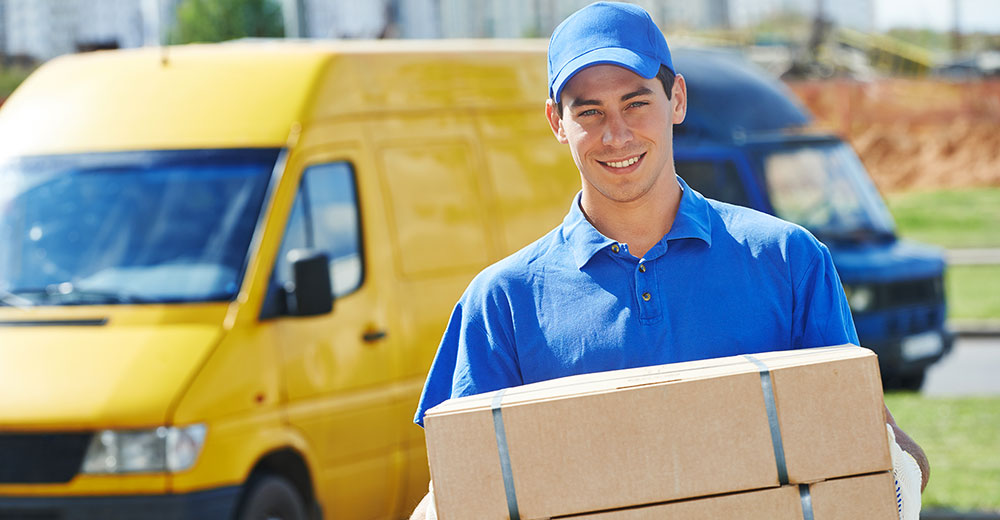If you’re an online retailer, congratulations are in order. Online holiday sales grew 18.8 percent in 2019 compared with 2018, according to Mastercard. Armed with new systems and processes — as well as lessons from the past — etailers were able to fulfill more orders than in previous years.
E-commerce business leaders are already thinking ahead to the 2020 holiday season, and they want to answer one big question: What can we improve over the next 10 months to generate the most value during the holidays?
Oftentimes, e-commerce leaders turn to the usual suspects:
- Tighter systems integration among enterprise resources for real-time information delivery
- Streamlined fulfillment processes designed to withstand an influx in orders
- Automation and robots within the warehouse
While all of these are great goals, they are areas e-commerce leaders frequently revisit to the detriment of greater opportunities in the areas of shipping, delivery, and improving the overall customer experience.
Rather, brands should explore ways to revolutionize how customers interact with retailers when it comes to picking up orders, shipping them back for delivery, and fitting the e-commerce shopping experience into their day-to-day lives.
In other words, it’s time to start investing more thought and resources into perfecting the last mile.
It’s Time to Flip Last Mile Assumptions
The shift from bulk commercial shipments to individual residential shipments has introduced an unprecedented level of complexity to the last mile — that is, the distance from the distribution center to the final address.
Complicating matters further is the scramble to keep customers as happy as possible, lest they abandon your brand for another etailer that promises to deliver their goods on time.
What’s the solution to this problem? According to many e-commerce business leaders, it’s a matter of investing more in warehouse automation, more into dedicated fleets, and more into delivery drivers, even if that means eating into profits. For many, there doesn’t seem to be much choice. If they want to keep up with the likes of Amazon, cutting back is simply not an option.
This viewpoint has one fatal flaw: a fundamental misunderstanding of the real problem. This solution is built on the premise that all consumers want packages delivered to their houses. Consequently, retailers and their delivery partners are stretching themselves thin to deliver to everyone, everywhere, in two days and without losing any money.
Let’s review a few statistics and anecdotes that illustrate the problem with this premise:
- Across the U.S., more than 1.7 million packages are lost or stolen every day.
- In some cities, the rate of failed first delivery attempts is as high as 15 percent.
- Failed deliveries cost customers, retailers, and carriers US$2 billion every year.
- Corporate mailrooms are being inundated with employees’ personal deliveries.
- Customers are sending packages to nearby stores.
It’s said that a problem well stated is half solved. If this information is anything to go by, it’s clear that e-commerce companies and carriers are solving the wrong problem.
The issue isn’t that consumers want all of their deliveries to come to their homes. They want their deliveries to safely and successfully arrive in a manner that’s most convenient to them.
What do customers do when they can’t find a solution in the market? They improvise, as the stories of overwhelmed corporate mailrooms demonstrate.
The real problem then is this: How can etailers and carriers provide a secure and convenient trusted third place for consumers’ deliveries?
The answer is by working with postal operators that have established pickup and dropoff locations for consumers. Examples include using storage lockers at public transportation hubs or university campuses and entering third-party partnerships with drugstores and convenience stores.
Tackling the last mile in this innovative way presents several potential benefits for etailers and carriers alike.
Exceed Delivery Expectations
Setting up third-party networks is tied directly to enhancing the customer experience. Amazon, which has built its business on creating phenomenal customer experiences, understands this. It decided to supplement its delivery infrastructure with Hub Lockers located in select U.S. cities, like New York City, where 90,000 packages disappear each day.
When etailers and carriers think about the customer experience, they focus exclusively on personalized offers, branding, and discounts. That’s for good reason, considering the fact that 80 percent of customers responding to a recent survey said they were more likely to shop from brands that offered a customized shopping experience.
Tailored experiences are not just about offers. They’re about understanding consumers’ unique pain points — like theft in big cities or lack of access in rural areas — and providing solutions, such as offering secure and convenient third-party locations.
Storage lockers and third-party locations go hand in hand with the goal of providing personalized experiences and enhancing customer satisfaction. In today’s digital world, predictive analytics is an important tool in any marketer’s arsenal — but in order to conduct a successful predictive analytics project, brands need enough data.
If a network of third-party operators is set up on easy-to-use cloud-based systems with survey generation technology and artificial intelligence functionalities, marketers can collect and analyze a wide range of valuable operational and customer data.
Customer expectations around delivery cost and time have skyrocketed. Customers expect not only free delivery but also fast delivery. In fact, two-day shipping has become the new normal.
Almost 80 percent of consumers in a recent survey reported that free, two-day shipping was important to them while online shopping. Meanwhile, 72 percent of customers said they likely wouldn’t do business with an online brand after a poor delivery experience.
If that’s not enough to demonstrate the importance of free and fast shipping, consider Amazon’s success over the 2019 holiday season. The company expanded its next-day shipping service, leading to more subscriptions to its Amazon Prime program in the fourth quarter of 2019 than in any other period and a 10 percent boost in its share price.
Revolutionizing the last mile through third-party networks helps exceed customer expectations and ease access to delivery services in a similar way. One parcel locker pilot test found that a common carrier locker system reduced parcel delivery times by 78 percent. Moreover, customers get the peace of mind of knowing their expensive purchases are safely delivered.
Finally, shoppers don’t have to send packages to their jobs and lug bulky items home on the subway. There are options where they can visit their local convenience store, post office, drug store or other retailer — an arrangement that, in turn, benefits these businesses from the increased foot traffic and sales.
Mitigate Last Mile Failures
Understandably, cost is a huge question in any business leader’s mind when considering a new business strategy or service delivery model. Implementing a network of pick-up and drop-off locations with third-party retailers sounds like it’s expensive and complicated and involves a lot of relationship management.
It certainly involves an investment of time and money — but when implemented correctly, it achieves the elusive dual goals of keeping operational costs low while generating additional revenue.
Let’s start with operational costs. A network of retail partners allows the permanent local presence of brick-and-mortar locations without the fixed costs of a brick-and-mortar location. By entering into variable cost arrangements with retailers, postal operators, and carriers can reduce the number of leases and fixed costs on their books and offer the value of secure deliveries to their e-commerce clients.
In addition, retail networks offer additional cost savings thanks to the very nature of their infrastructure. In order for a retail network to be successful, it needs a user-friendly system that retail partners can use and access quickly, with minimal upfront investment.
In other words, it needs to be a cloud solution that simply requires an Internet connection, any computer (including smartphones and tablets), and a printer. With this kind of application, carriers and postal operators can collect and analyze greater volumes of data. With powerful optimization tools, they can generate powerful insights — like which retail location would benefit from more employees or services.
As far as revenue generation is concerned, there are already statistics that support the argument that pickup and dropoff locations are good for business. Delivery operations that leverage storage lockers in conjunction with other solutions can lead to a “15 to 20 percentage point increase in project margin,” according to McKinsey.
The Goal for 2020: Delivery Transformation
The bottom line: Delivery and carrier operations are worth any e-commerce brand’s attention.
While e-commerce companies don’t own the delivery portion of the supply chain, they bear the brunt of customers’ dissatisfaction. As a result, it’s up to e-commerce companies to advocate for their interests and present possible solutions to postal partners and carriers who profit hugely from their business.
Championing the service model and technology of the last mile is an excellent starting point.














































Social Media
See all Social Media